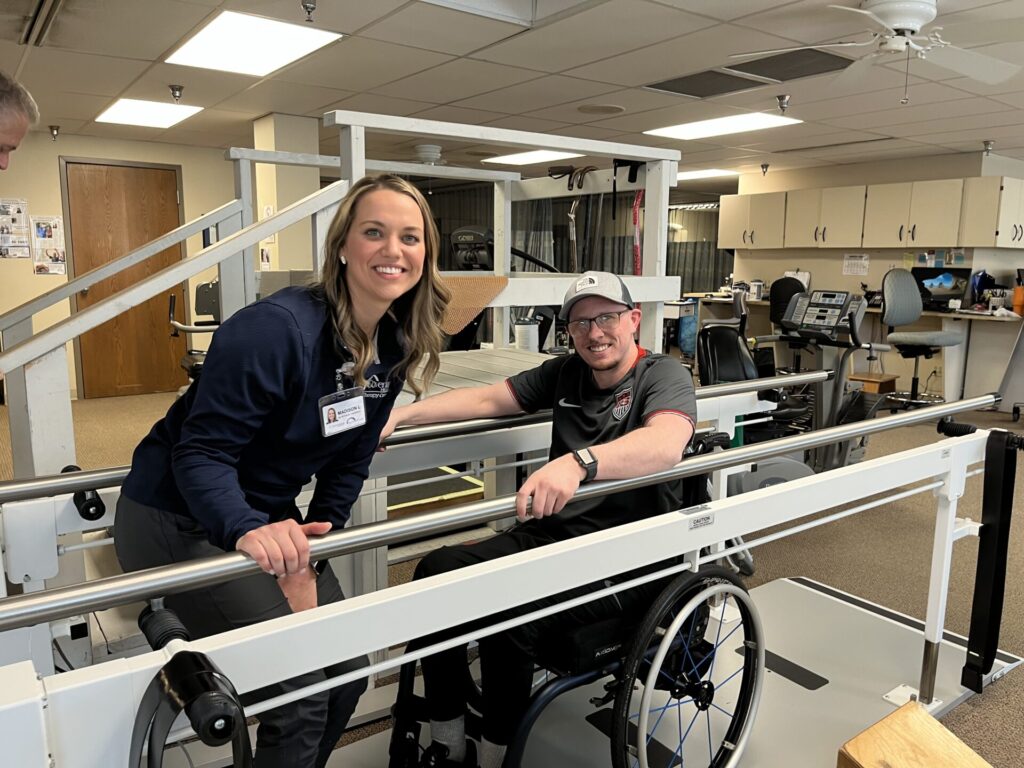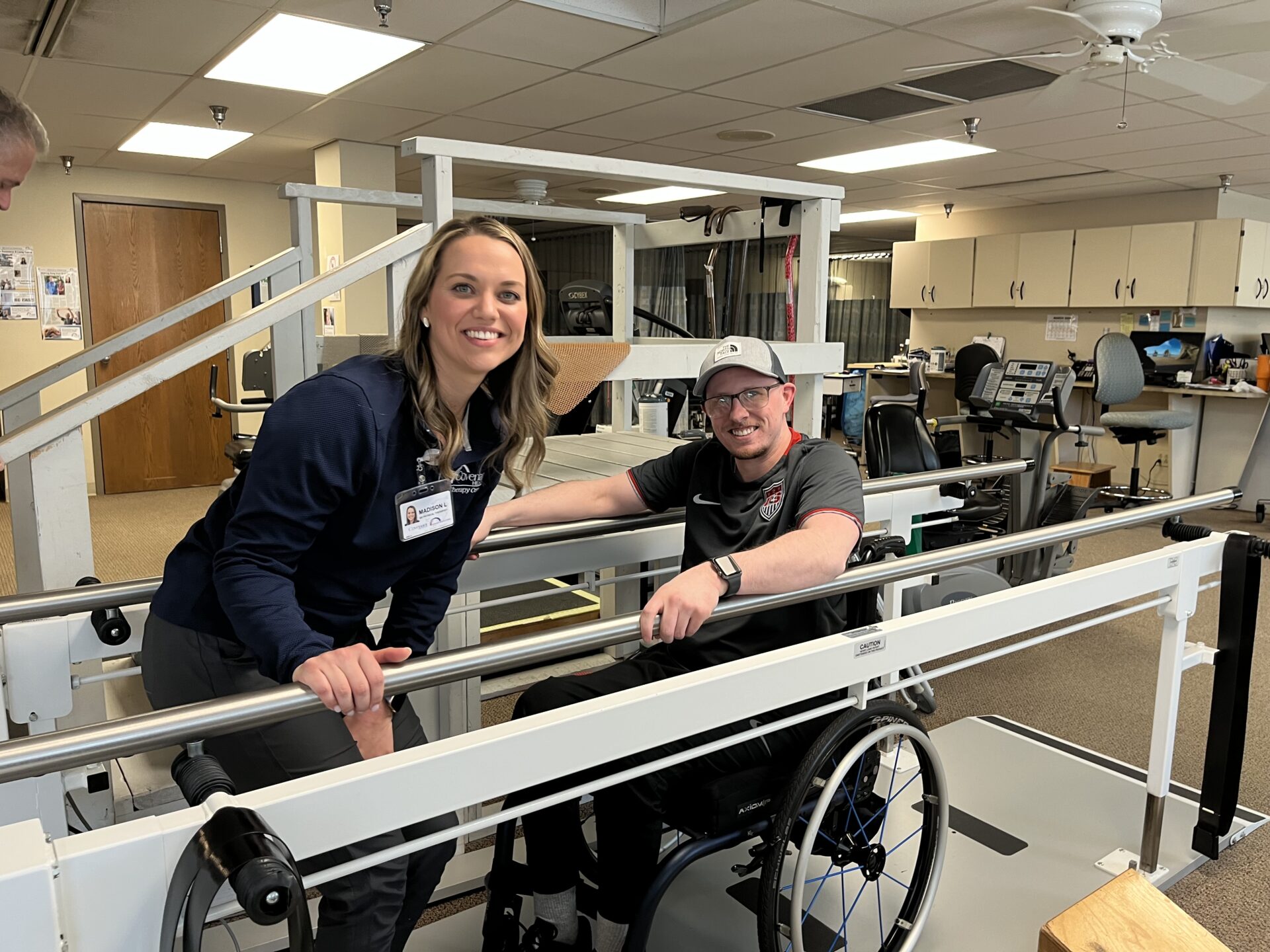- Find a DoctorDoctors by Specialty
- Cardiac Electrophysiology
- Cardiology
- Colon & Rectal Surgery
- Family Medicine
- Gastroenterology
- General & Vascular Surgery
- Gynecological Oncology
- Gynecology
- Infectious Disease
- Internal Medicine
- Interventional Cardiology
- Interventional Radiology
- Nephrology
- Neurology
- Neurosurgery
- Obstetrics & Gynecology
- Oncology
- Oncology & Hematology
- Orthopedic Surgery
- Otolaryngology
- Perinatology
- Psychiatry
- Pulmonary Medicine
- Radiation Oncology
- Rheumatology
- Sleep Medicine
- Thoracic Surgery
- Urology
- View All Doctors
- Our ServicesMedical Services
- Bariatric Services
- Behavioral & Mental Health
- Breast Care
- Cancer Care
- Critical Care
- Ear, Nose, & Throat
- Emergency Services
- Gastroenterology
- Glossary
- Heart Care
- Home Care
- Hospice & Palliative Care
- Imaging & Diagnostics
- Long-Term Care
- Nephrology
- Orthopedics
- Primary Care
- Rehabilitation Therapies
- Robotic-Assisted Surgery
- Sleep Services
- Spine Care
- Stroke Care
- Surgery Services
- Telehealth Services
- Urology
- Urgent Care
- Virtual Urgent Care
- Women’s Services
- Wound Care
- Our Locations
- Patients & Visitors
- About Us

The pandemic has impacted millions across the nation in different ways, and lax exercise and nutrition goals have some Americans straying from a healthy lifestyle. Revive your healthy lifestyle during National Nutrition Month® this March.* Take some time this month to analyze your nutrition goals for 2021.
If you need some extra help getting back on track, we have some tips on eating right from the Academy of Nutrition and Dietetics and Fort Sanders Regional Medical Center’s registered dietitian nutritionists, Rachel Ignomirello, MS, RDN, CSOWM, LDN, and Carmen DePaoli, MS, RD, LD.
Tip 1: Make Half Your Plate Fruits and Vegetables
Fruits and veggies add color, flavor and texture plus vitamins, minerals and dietary fiber to your plate.
Make two cups of fruit and two and a half cups of vegetables your daily goal.
“Sneaking fruits and vegetables into breakfast meals are one of my favorite ways to ensure I reach my fruit and vegetable intake for the day,” DePaoli says. “Try adding spinach or kale to

smoothies, topping oatmeal with additional fruits or adding a variety of vegetables to scrambled eggs.”
“Small changes lead to big results,” Ignomirello says. “Make small changes to the way you eat without giving up the foods you love.”
Tip 2: Get Cooking
Preparing foods at home can be healthy, rewarding and cost-effective. Master some kitchen basics, like dicing onions or cooking dried beans. Cooking foods yourself also helps you control exactly what goes into what you eat.
“Plan meals around the ‘deals of the week’ at your local grocery store and around fruits and vegetables in season. It can be more
cost effective and increase meal variety,” DePaoli says. “Creating a grocery list prior to shopping will decrease time spent in the store, as well as decrease impulse buys, helping to keep you on track with your meal plan and budget.”
Tip 3: Watch Portion Sizes
Use half of your plate for fruits and vegetables and the other half for grains and lean proteins. Complete the meal with a serving of fat-free or low-fat milk or yogurt. Measuring cups may also help you compare your portions to the recommended serving size.
“As a society, we are at risk of serious health complications because of our large portion sizes, quick access to unhealthy foods and
mostly sedentary jobs and travel,” Ignomirello says. “Reducing portion sizes can help you establish healthy eating habits.”
Tip 4: Get to Know Food Labels
Reading the Nutrition Facts panel can help you choose foods and drinks to meet your nutrient needs. Take note of how many servings are in a package and the portion size for one serving.
Tip 5: Drink More Water
Quench your thirst with water instead of drinks with added sugars. Stay hydrated and drink plenty of water, especially if you are active, an older adult or live/work in hot conditions.
“Adding fresh fruit and herbs such as mint or basil to water can help add flavor and increase water consumption,” DePaoli says.
Tip 6: Consult an RDN
At Fort Sanders Regional, inpatients benefit from our team of clinical registered dietitian nutritionists (RDNs) who help manage
individual health risks or a chronic disease while in our care. Outpatients can obtain a referral to visit an RDN for help losing weight,
eating healthier and meeting specific dietary needs. All of the RDNs who care for patients at Fort Sanders Regional provide individualized, easy-to-follow nutrition advice.
“We are the experts in nutrition, and our schooling and internships prepared us for that,” Ignomirello says. “We are not the ‘food
police.’ We want to learn about your nutrition and lifestyle so that we can help you set goals and prioritize your health.”
Interested in a medically supervised approach to weight loss? Learn more about bariatric services at Fort Sanders Regional by
visiting FSRegional.com/Bariatrics.
*National Nutrition Month® is an annual campaign created by the Academy of Nutrition and Dietetics. The campaign’s goal
is to provide education for all about making informed food choices and developing healthy eating and physical activity habits.
























